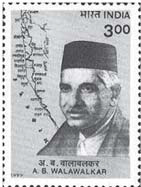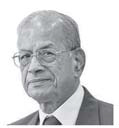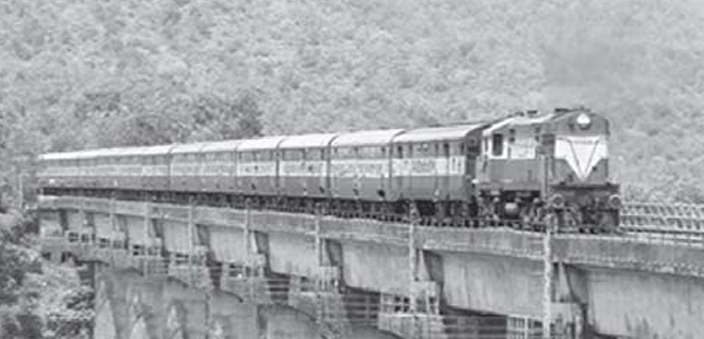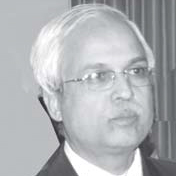Konkan Railway (KR) is an Indian marvel. The 760 km rail passes through one of the most difficult terrains in the world. Its completion within just eight years by Indian engineers is a global record, a unique feat of civil engineering. The financing model created for KR is still unmatched. KR now is expected to take a quantum leap with Railway minister Suresh Prabhu, who hails from Malvan in Sindhudurg district, announcing a plan to build a new 112-km railway line between Karad in Satara district and Chiplun in Ratnagiri district, at an estimated cost of Rs. 1200 crore. Once completed, this line will connect the Konkan region and the mainland and will eventually integrate with Indian Railways. The socio-economic benefits of this connection are immense.
This new line will generate considerable employment along the Konkan belt which has a coastline of about 720 km. According to the plans, many small and big ports will have a direct route to the heartland of India, thanks to this link. Presently, they are compelled to take a detour and travel long distances by road.
How the project began
The credit for launching the much-awaited KR project in 1989 goes to then Union finance minister Madhu Dandavate, railway minister George Fernandes, Maharashtra chief minister Sharad Pawar and Planning Commission deputy chairman Ramkrishna Hegde. KR decided to raise its own funding, construct the line connecting Mumbai with Mangalore as fast as possible, and repay the loans in a time bound manner.
The challenging assignment was entrusted to E. Sreedharan, a veteran railway technocrat already in retirement. Sreedharan became the first Chairman and Managing Director of KR. Sreedharan’s task consisted, inter alia, to :
- build 760 km of rail with least gradient
- build about 2000 bridges, big and small
- build 92 tunnels with total length of 83 km
- persuade over 42,000 landowners to part with their holdings
- interact with governments in Maharashtra, Goa, Karnataka and Kerala
- raise Rs. 2250 crore from the public.
People were persuaded to give up their ancestral lands in the interests of the nation. They readily obliged. On its part, KR acted humanely and paid the land owners a fair price. Heritage, community and religious structures were left untouched. Payments were delivered promptly. All this resulted in the completion of land acquisition within 12 months.
Many novel ideas were adopted. One of them was that the work was divided into seven sectors of around 100 km each. Every section was put under a Chief Engineer who had the freedom to take on the- spot decisions. As a time saving measure, concrete sleeper plants were set up at Chiplun, Kudal, Madgaon (Goa) and Murdeshwar (Karnataka) to manufacture over a million sleepers for the project. Materials like cement, steel, rails and dynamite were stored in adjacent depots.
Quality control as per international standards was the keyword from day one. Total transparency in the bidding and the contract awarding process eliminated any chance of litigation. The financing model developed for KR is still considered the best. This is because it was for the first time in India that funding was raised without touching the government treasury for a rail project. The authorised capital of Rs. 800 crore was contributed by the Indian Railways and by Kerala, Karnataka, Goa and Maharashtra states. This was supported by issuing public bonds of Rs. 2250 crore.
Those who made
Konkan Railway a reality

Arjun Balwant Walawalkar is regarded as the father of Konkan Railway. Born on 27 December 1897, he joined the railways in its engineering drawing department in 1922. In 1952, he published a booklet to advocate the demand for KR, held seminars and wrote extensively in local and national newspapers to propagate the idea.

Nath Pai, the Konkan MP, first raised the demand for KR in the Parliament. A captivating speaker, he died a premature death, but had generated enough support to take the demand further.

Elattuvalapil Sreedharan is famous the world over as the “Metro Man” for completing the Delhi Metro project in record time. He has changed the face of mass transport in India singlehandedly. He was decorated with the Padma Vibhushan in 2008.
Surmounting all hurdles, the project made good progress. In March 1993, the southernmost section of 47 km between Thokur and Udupi was inaugurated. This was followed by the northernmost section of 47 km between Roha and Veer in Raigad district in June 1993. The first passenger train on KR ran between Mangalore and Udupi on 20 March 1993. The service was extended by 51 km from Veer to Khed in March 1995, and by another 265 km from Khed to Sawantwadi in December 1996.
But Mumbai and Mangalore still remained to be connected. This was owing to a challenge posed by the tunnel at Pernem. Incessant caving in and flooding of the shaft was stalling work. It was finally completed in January 1998, taking almost six years. The formal inauguration of the entire stretch of 740 km from Roha to Mangalore took place on 26 January 1998, though the full route between Mumbai and Mangalore became operational from May 1998.
Konkan Railway’s ecological initiatives
Konkan Railway will play a major role in railway minister Suresh Prabhu’s vision of promoting eco-friendly initiatives. For instance, KR has decided to install a solar plant at Ratnagiri as part of its ‘clean energy policy’. According to Prabhu, the policy envisages to employ solar and wind aero-generators wherever possible.
The proposed 350 KW-capacity solar photo voltaic plant, which will be connected to the state grid, shall generate about 3.8 lakh units of energy per year – sufficient to meet the entire energy requirement of Ratnagiri railway station and railway office.
The project will cost about Rs. 3.6 crore. The plant is expected to result in a saving of about Rs. 42 lakh per annum. There are plans to increase the generation capacity of the plant to 1 MW.
Another step towards environment conservation and waste management is a recently installed organic waste composting plant at its residential colony at Seawoods in Navi Mumbai. The plant will enable KR to manage by itself all the organic and green waste produced in the colony. After assessing the results, KR plans to replicate the system at some major stations and its residential colonies.
Challenges for KR are manifold. Still, priority needs to be given to doubling of the tracks and the monsoon precautionary measures so that the operations are not affected during heavy downpours. Prabhu has declared that these factors would be considered promptly. However, the main challenge of developing the region through which KR passes, economically, needs highest attention. Nonetheless, in the decades to come, KR is bound to play a crucial role in India’s development.


